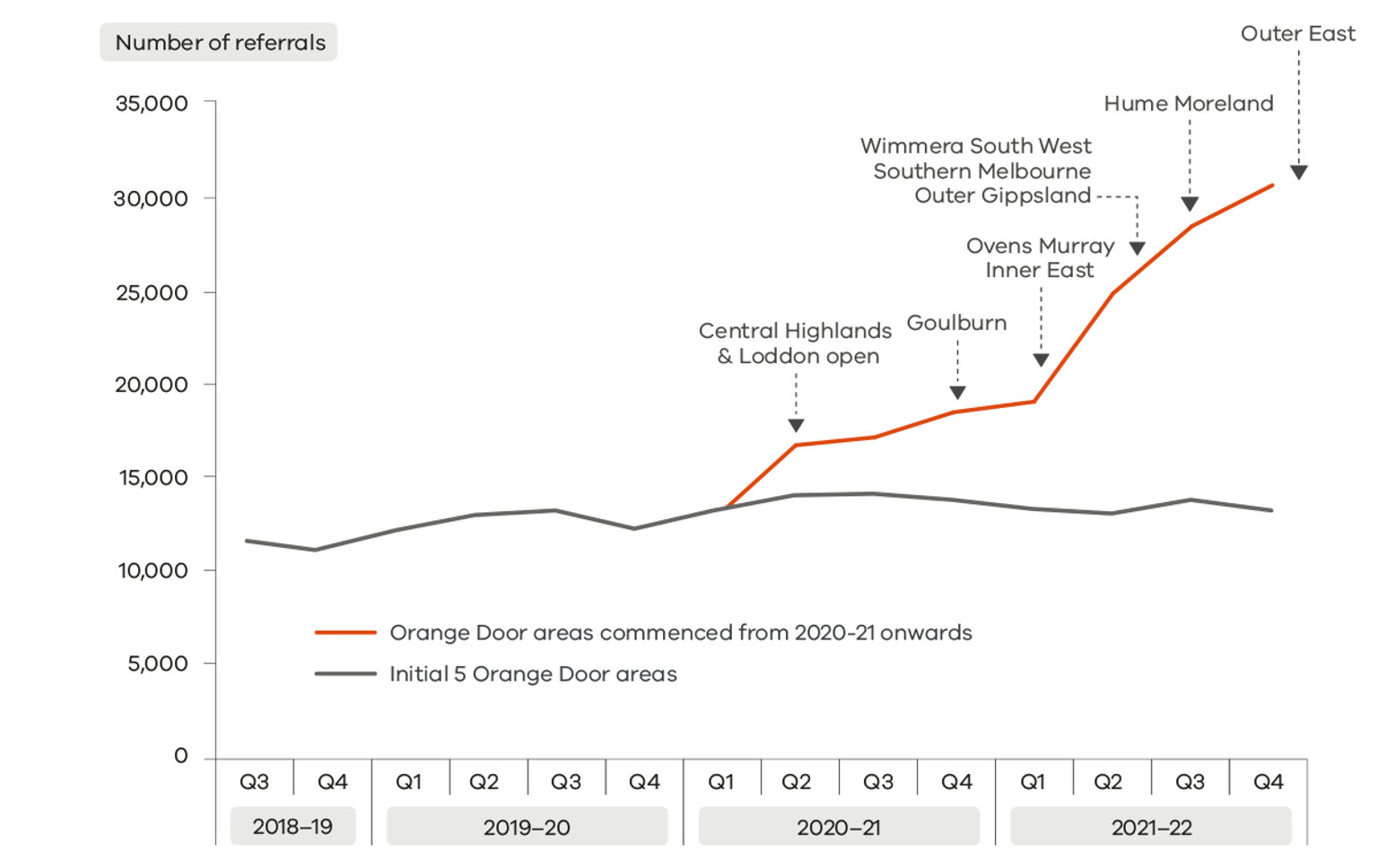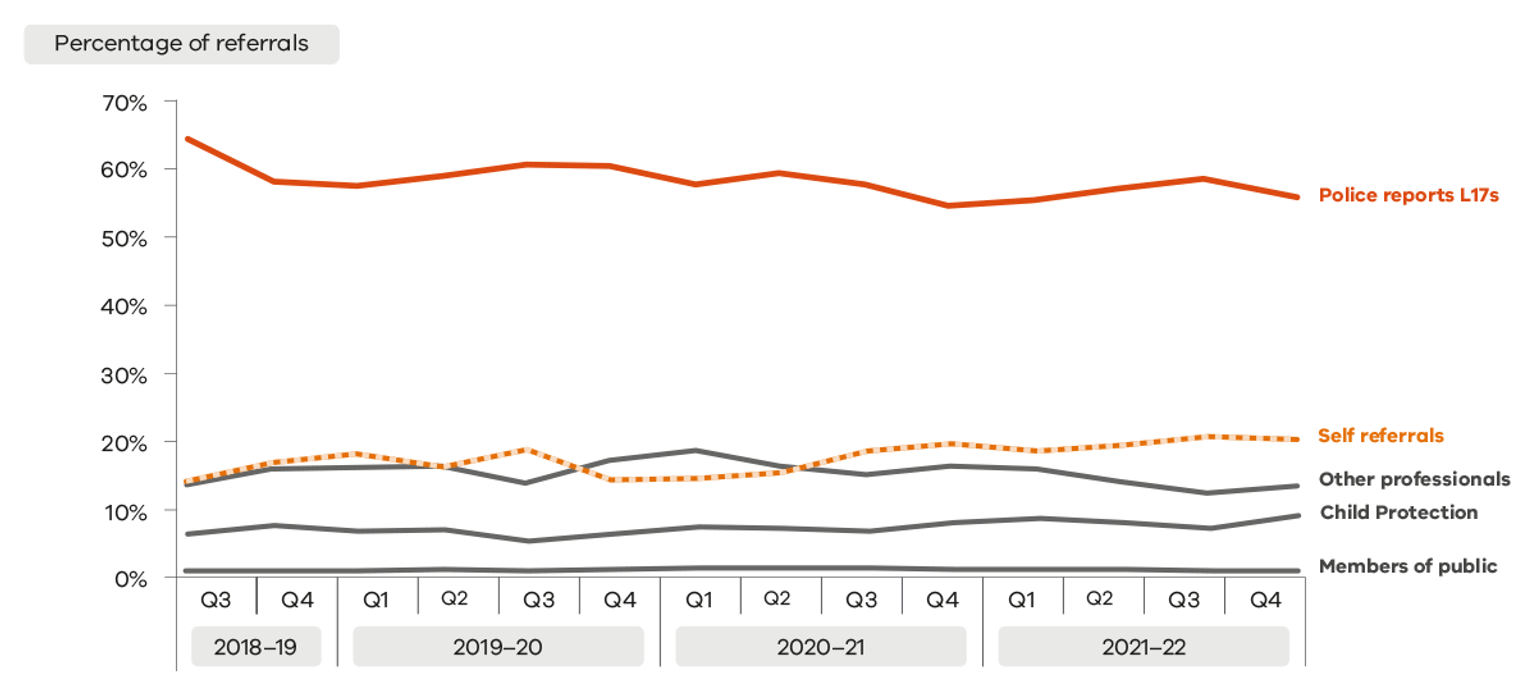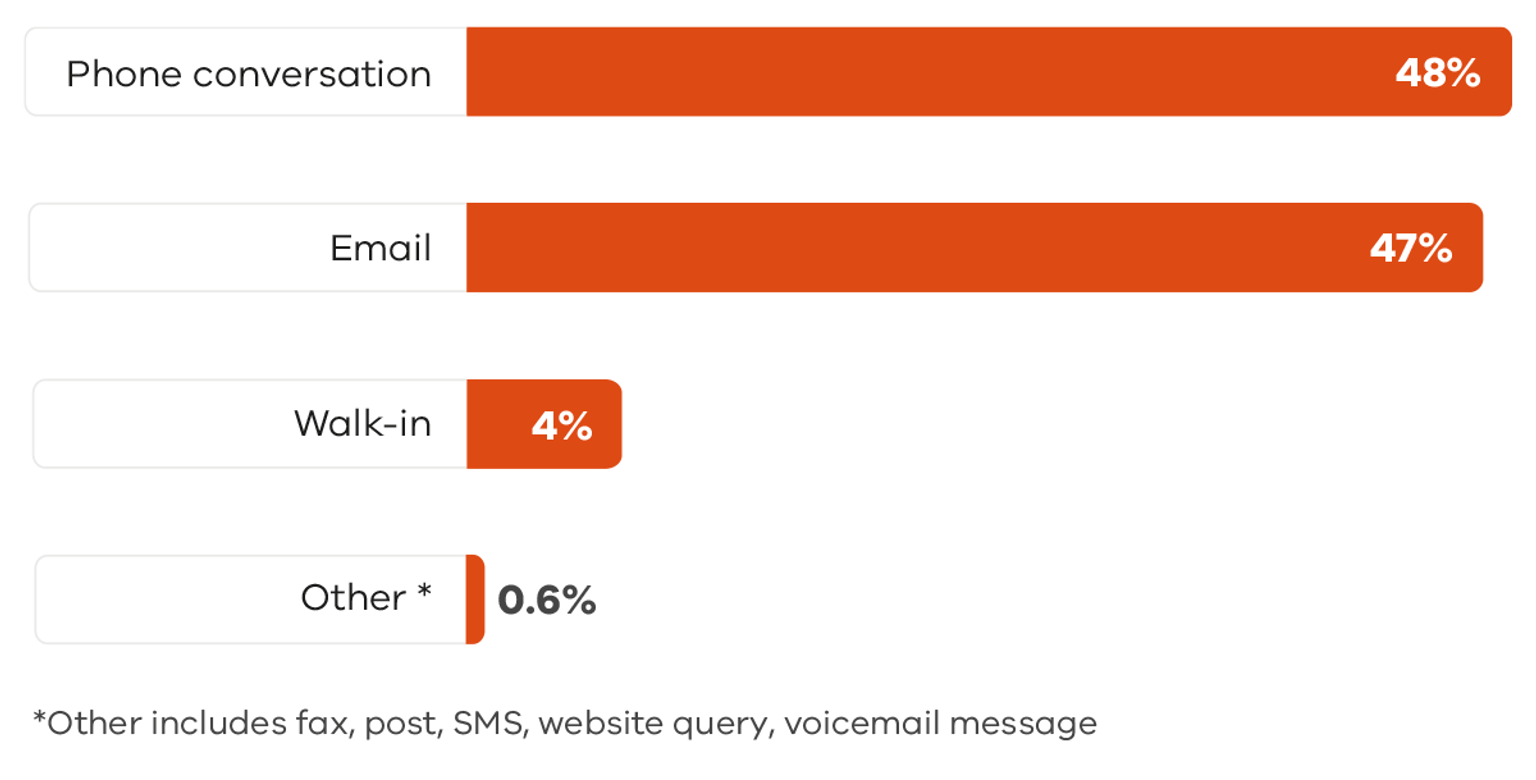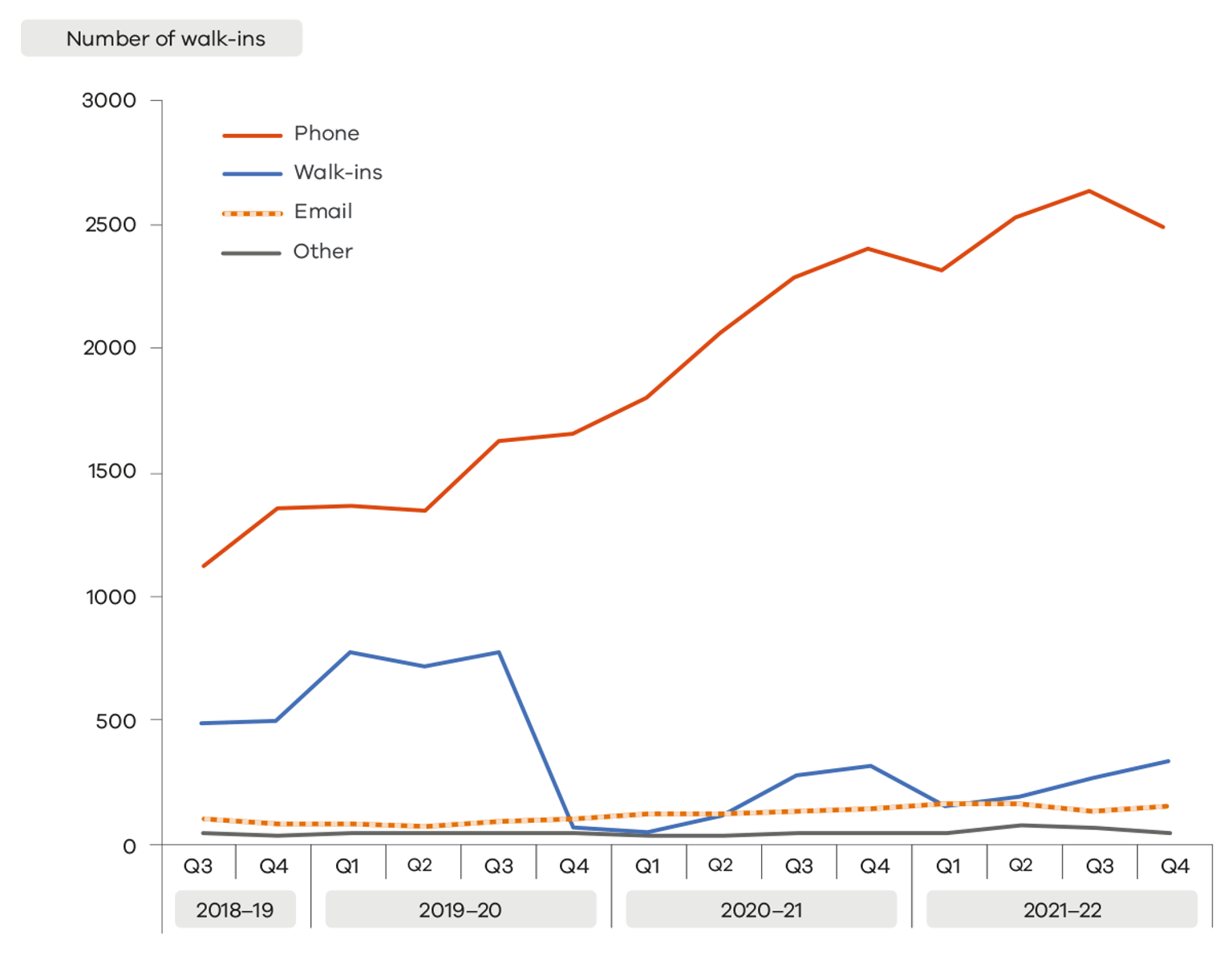How are people accessing The Orange Door network for assistance?
The Orange Door network aims to be accessible, safe, and welcoming to people, providing quick and simple access to support. Referrals to The Orange Door network have increased significantly since the statewide rollout commenced in May 2018 having received over 260,000 referrals to date for individuals and families since commencement.
Referrals to The Orange Door network come from a range of sources, including:
- police reports
- direct contact (or ‘self-referral’)
- Child Protection
- other professional sources, and
- from members of the public.
Referrals of individuals and families can also be made by a range of professionals (including Child Protection) or members of the community. Professionals and members of the community can also contact The Orange Door network for information and advice where there are concerns for the safety of an adult, child or young person and/or the wellbeing of a child.
In 2021-22 alone, The Orange Door network received more than 106,000 referrals. Over half of the referrals received included at least one child.
The increase in referrals was largely due to the expansion of The Orange Door network with seven new operational areas commencing in 2021-22 (Figure 5). These were Ovens Murray, Inner Eastern Melbourne, South West (Wimmera South West), Southern Melbourne, Outer Gippsland, Hume Moreland and Outer Eastern Melbourne (see also Figure 2).
Across the 5 initial The Orange Door areas (Bayside Peninsula, Barwon, Mallee, Inner Gippsland and North East Melbourne), the trend in referrals has flattened over the last two years with a 3% decrease since 2020-21. When compared over a longer four-year period, referrals to these initial 5 areas have increased by 30%.
In 2021-22, the most common way people accessed The Orange Door network was through police referral reports, also known as L17s, which made up 56.9% of all referrals (Figure 6).[7] This is a slight decrease from the previous year, and a more pronounced decrease from 2018-19 when police referral reports made up 63.8% of all referrals.
People do not need a formal referral to access The Orange Door network. Individuals and families who need support can make direct contact themselves, which is called a ‘self-referral’. These self-referrals include contact via phone, email or physically attending The Orange Door.
Self-referrals have progressively increased since the commencement of The Orange Door network. In 2021-22, self-referrals comprised 19.7% of all referrals, up from 17.2% in 2020-21 and 13.2% in 2018-19. This may reflect more visible and accessible entry points brought about by The Orange Door network.
How does the community presence of The Orange Door network support safe and easy access?
The Orange Door network is designed to be a safe and accessible community service, to make it easier for people seeking help for family violence or help with the wellbeing of children, young people and their families. People can contact The Orange Door network in ways that are convenient, safe and accessible for them, including through telephone, email and in person.
Each area has a toll-free telephone number and direct email address to facilitate ease of contact. People who make direct contact with The Orange Door themselves through a self-referral generally do so by telephone (86.4%) as do people making contact on behalf of someone they know (82.5%). Referrals received from professionals (excluding police referral reports) are mostly received by email (77.9%) or telephone (21.5%). Across all types excluding L17 police referrals, 48.5% of all referrals are received by telephone (Figure 7).
Finding a local Orange Door
The Orange Door provides an entry point into the continuum of services that aims to ensure there is no wrong door to access high quality, consistent and effective support for children, young people and families in communities.
The Orange Door network website has a service finder function to support people to find the contact details for The Orange Door network in their area,[8] or relevant services in areas where The Orange Door network is yet to be established. Information contained on The Orange Door website is accessible in 49 different languages.
In 2021-22, the website was visited over 352,000 times by over 219,000 people. This represented a 79% increase in visits and an 80% increase in users compared to 2020-21. In 2021-22, the Careers page had a 97% increase in page views and the Contact Us page increased by 112%.[9]
The physical premises of The Orange Door network have been established in locations central to local communities and accessible by public transport. The COVID-19 pandemic continued to have a significant impact on people’s access to the physical premises of The Orange Door network in 2021-22.
This can be seen across the five initial The Orange Door areas, which experienced a significant decrease of walk-ins at the start of the pandemic and which has remained relatively low since (Figure 8). Even though Victoria’s public health directives permitted people to leave home to escape family violence risk or harm, walk-ins have remained low.
In 2021-22 across the Orange Door network, nearly 2,000 individuals and families (1.8% of all referrals) presented in person (walk-ins) to seek support, representing a 125.4% increase from walk-ins in 2020-21.
This outcome is mostly due to the expansion of The Orange Door network. For example, 5 initial The Orange Door areas experienced a 26.4% increase in the number of walk-ins. Self-referrals by phone increased by 16.6%.
Notes
[7] Referrals that come directly from Victoria Police when there has been a report of an incident of family violence (known as ‘L17s’) are provided through a dedicated online portal (the L17 portal).
[8] The Orange Door network, Contact Us webpage, State Government of Victoria, accessed 7 November 2022.
[9] This data was sourced from the Single Digital Presence Dashboard, State Government of Victoria, accessed 14 October 2022.
[10] A small proportion of referrals have an unknown referral source. These have been excluded from this figure.
Updated



